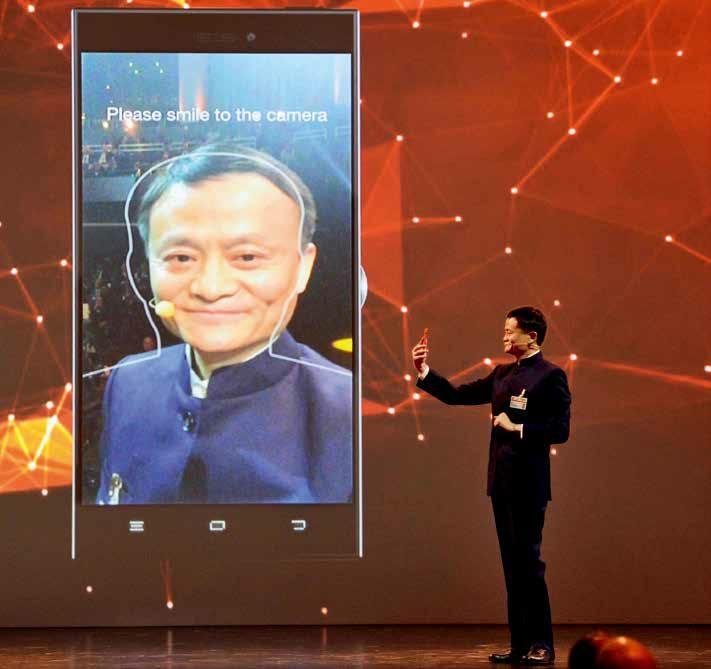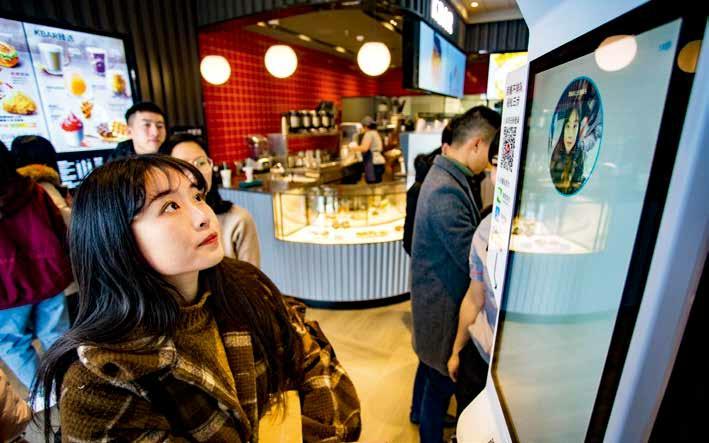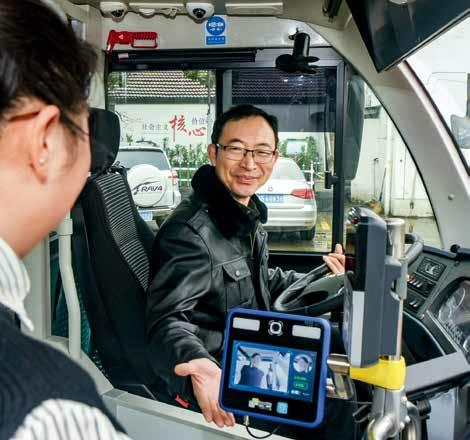The Era of FacePay
by Ru Yuan


Zhang Haiyangs work doesnt seem that difficult. After plugging in the face-scanning payment machine, connecting it to the wireless internet and adjusting the scanner, the job is almost done. If snags are avoided, installation and debugging of a face-scanning payment machine can be completed in about 30 minutes. The official name of Zhangs job is“installation and debugging personnel for the Internet of Things.”It was one of the 13 new occupations identified in a document jointly released by Chinas Ministry of Human Resources and Social Security, National Bureau of Statistics and State Administration for Market Regulation in April 2019.
Face-scanning payment services are quietly sweeping across China. The wave has already created new occupations, promoted development of related manufacturing industries and changed lifestyles.
An Industrial Chain in the Making
“Paying with your face” is more convenient than one might imagine. A customer has his or her face scanned by a facial recognition payment device shaped like an iPad. The camera on the device collects facial information for identity recognition and the payment goes through. The payment is directly deducted from the consumers account. In most cases, a face-scanning payment is completed within 10 seconds. A first-time user needs to enter a phone number linked to his or her payment instrument, which may take a bit more time.
In August 2018, Alipay, a thirdparty mobile and online payment platform launched by Chinas internet giant Alibaba Group, announced the large-scale commercial rollout of its new facial payment technology. In December 2018, Alipay delivered its “Dragonfly” facial recognition point-of-sale (POS) system, the first pay-with-face system used by human cashiers. Now, “Dragonfly”devices can be found in more than 300 Chinese cities. In March 2019, WeChat, a popular instant messaging app developed by another large Chinese internet company Tencent, launched its own face-scanning payment device called “Frog.”In just one year, face-scanning payment, which is more convenient than mobile payment and bypasses the need for a users device, has spread widely in China. Behind the new payment option, a huge industrial chain is emerging.
For equipment manufacturers, it is not easy to produce face-scanning payment machines or components and parts. According to industry insiders, the testing requirements for face-scanning payment machines are even higher than those of Apple phones. In terms of production,a face-scanning machine has to pass more than 40 procedures from moulding in the beginning to the packaging in the end, including optical testing, aging testing, high temperature testing, camera quality testing, drop testing and latency testing. Such a complicated production process keeps small and medium-sized manufacturers out of the game.
Shenzhen-based Orbbec makes structured-light 3D cameras used on Alipays “Dragonfly” devices. In September 2017, diners could already pay with their faces at KFCs health-conscious eatery Kpro in the MIXC Shopping Mall in Hangzhou. It was the first restaurant to accept face-scanning payment in the world, and the infrared 3D cameras installed on its face-scanning payment machines were made by Orbbec. In December 2018 when Alipay released “Dragonfly”and announced the use of structured-light 3D camera on the device, more people began to look towards Orbbec which is devoted to 3D sensing and artificial intelligence (AI) vision technology. “The release of the ‘Dragonfly gained Orbbec massive attention because in the field of structural optical technology, Orbbec is the fourth manufacturer on the planet to be capable of mass production of 3D sensors for consumer use after only Apple, Microsoft and Intel,”explains an industry insider.
Fast-changing Payment
In recent years, China has seen earth-shaking changes in payment methods. From paper money, bank cards, third-party payments and mobile payments to face-scanning payment, paying in China has become increasingly convenient and fast. This situation is particularly true today, especially against the backdrop of the fast development of AI and 5G. Today, Chinas cashless society is developing at breakneck speed.
According to E-Commerce in China 2018 released by Chinas Ministry of Commerce in May 2019, in 2018, online payments made by non-bank payment institutions in China exceeded 208 trillion yuan (US$30.3 trillion), an increase of more than 45 percent over the previous year. In 2017, the amount of online payments made by non-bank payment institutions also increased by more than 44 percent year-on-year. Online payments conducted by non-bank institutions have increased rapidly over the past two years. Non-bank payment institutions mainly refer to third-party online payment platforms. Among them, Alipay and WeChat Pay remain the two biggest players. Both providers huge volume of transactions demonstrates vast numbers of users, customer loyalty and transaction frequency. By the end of 2018, Alipays global users topped one billion including 650 million monthly active users. WeChat Pays users now number 800 million, who together conduct an average of more than 1.2 billion transactions every day.
With mature and large-scale mobile payments as prerequisite, application of face-scanning payment service is a lifestyle improvement brought by the development of cutting-edge technologies like AI. The advantages of the new payment mode are obvious. It is faster, requires fewer operating fees and frees customers from payment difficulties in various awkward situations. For example, face-scanning payment is handy if a customer forgets to bring a wallet or mobile phone or lacks a signal or battery power.
As for the question whether face-scanning payment technology is safe, a concern which once drew considerable public attention, the outlook has become more positive thanks to the development of advanced technologies including AI, machine vision and 3D sensing.“The first time a consumer uses the face-scanning payment function, the device collects biological information unique to that person,”stresses Zhang Haiyang. Since a 2D image cannot record the depth information of a specific face, fake photos, videos or a molded face could fool the system. However, the structured-light 3D camera can comprehensively scan the face information, which makes it virtually impossible to trick.
“With more and more industries and businesses embracing face-scanning payment services, my colleagues and I are confident this will become a new way of life,”Zhang adds.
